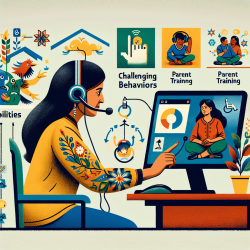Introduction
Lung cancer remains the leading cause of cancer-related deaths in the United States, with disparities in incidence and mortality rates evident across different racial, ethnic, and socioeconomic groups. The American Thoracic Society's statement, "Addressing Disparities in Lung Cancer Screening Eligibility and Healthcare Access," highlights the critical need to ensure equitable access to lung cancer screening (LCS) to improve outcomes for high-risk populations.
Key Findings
The research identifies several barriers contributing to disparities in LCS implementation, including:
- Eligibility criteria that do not account for racial, ethnic, socioeconomic, and sex-based differences in smoking behaviors and lung cancer risk.
- Limited access to screening facilities, particularly in rural areas.
- Insurance coverage variability, especially for Medicaid recipients.
- Patient-level barriers such as stigma, medical mistrust, and lack of awareness.
Proposed Strategies for Practitioners
Practitioners can play a pivotal role in reducing these disparities by implementing the following strategies:
1. Tailored Screening Guidelines
Adopt screening guidelines that consider both USPSTF criteria and individualized risk assessments, particularly for minorities and women who may not meet traditional eligibility criteria but are at high risk.
2. Enhancing Tobacco Treatment
Provide access to evidence-based tobacco cessation programs that are culturally sensitive and address language and literacy differences.
3. Addressing System-Level Barriers
Integrate patient navigators within LCS programs to assist vulnerable populations in navigating the healthcare system and adhering to screening protocols.
4. Leveraging Technology and Media
Utilize telehealth and mobile screening units to reach geographically isolated populations and implement culturally adapted media campaigns to raise awareness about LCS.
Encouraging Further Research
Practitioners are encouraged to engage in further research to refine these strategies and explore new methods for reducing disparities in LCS. Collaborating with research institutions and advocacy groups can enhance the development of innovative solutions tailored to the needs of diverse populations.
Conclusion
Addressing disparities in lung cancer screening is not only a matter of social justice but also a crucial step toward improving public health outcomes. By implementing these strategies, practitioners can contribute to more equitable healthcare access and better lung cancer outcomes for all high-risk groups.
To read the original research paper, please follow this link: Addressing Disparities in Lung Cancer Screening Eligibility and Healthcare Access. An Official American Thoracic Society Statement.










